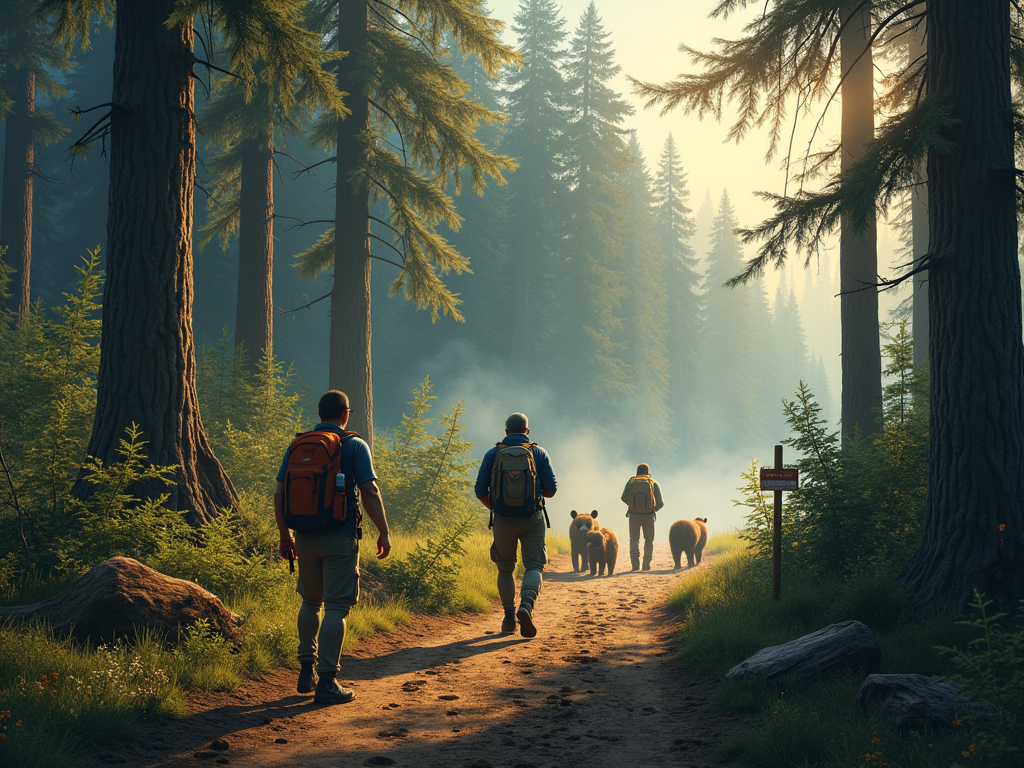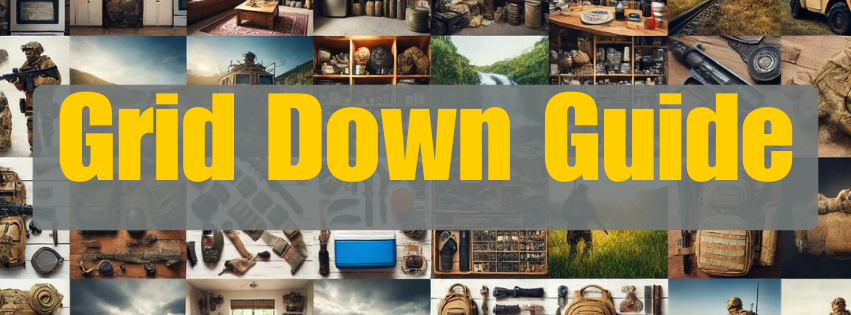
I know firsthand that wild animal encounters pose risks, yet simple precautions prevent most dangerous situations. Research confirms that human actions trigger 80% of wildlife attacks, making proper preparation essential for outdoor safety.
Key Takeaways
- Make noise while hiking, travel in groups of at least four, and maintain proper distances—100 yards from bears and wolves, 25 yards from other wildlife.
- Proper food storage and campsite cleanliness prevent 98% of bear encounters from becoming dangerous.
- Stand your ground, avoid running, and make yourself look bigger if you encounter wildlife.
- Spring and early summer present the highest risk periods due to animals protecting their young.
- Always carry safety tools like bear spray and know how to use them effectively.
I find that basic safety measures make the difference between a memorable outdoor experience and a dangerous situation. Mother animals stay highly protective during spring and early summer, requiring extra caution during these seasons. Staying alert and following proven protocols cuts the risk of wildlife confrontations dramatically.
My experience shows that consistent awareness paired with the right preparation creates safer outdoor adventures. Simple steps like proper food storage and maintaining clean campsites stop most bear encounters before they start. Having the right safety gear and knowing exactly how to use it gives you confidence to handle unexpected wildlife meetings safely.
https://www.youtube.com/watch?v=kkFFq11j6dQ
Essential Wildlife Safety Tips That Could Save Your Life
Understanding Animal Behavior and Risk Factors
Wild animals don’t typically seek out human contact, but certain situations make encounters far more dangerous. I’ve found that animals are most defensive when protecting their young, territory, or food sources. According to the US Fish and Wildlife Service, roughly 47,000 wild animal attacks occur annually in the United States, with most being preventable through proper awareness and preparation.
The timing of outdoor activities plays a crucial role in wildlife safety. Spring and early summer present the highest risk periods since many species have new offspring. During these seasons, I recommend taking extra precautions and considering natural deterrents to keep wildlife away.
Preventing and Responding to Wildlife Encounters
My research shows that 80% of wildlife attacks are actually provoked by human behavior. Here are the key actions I take to minimize risks:
- Make noise while moving through wildlife areas – clap, talk, or use bells
- Store food in sealed containers and keep camp areas clean
- Stay alert and scan surroundings frequently
- Keep children close and pets leashed
- Avoid hiking alone in predator territories
If you encounter aggressive wildlife, I suggest having effective self-defense techniques ready. For bears specifically, studies from the North American Bear Center show that mother bears with cubs cause 70% of fatal attacks. That’s why I always carry bear spray and know proper bear encounter response techniques.
The risk of wildlife confrontation increases eight-fold during mating seasons when animals are more territorial and aggressive. During these periods, I advise learning to read animal warning signs. If you spot fresh droppings, scratched trees, or hear warning calls, leave the area immediately.
For protection in wildlife-rich areas, I combine awareness with practical tools. This includes carrying defensive equipment for protection and knowing how to avoid animal territories. By staying informed about local wildlife patterns and maintaining appropriate safety measures, you’ll significantly reduce your risk of dangerous encounters.

Stay Safe While Hiking and Camping in Wildlife Territory
Group Safety and Noise Management
I’ve found that hiking with others is one of the best defenses against wildlife encounters. Studies show groups of 4 or more people experience 90% fewer animal attacks compared to solo hikers. While surviving a bear encounter is possible, prevention remains the safest strategy.
Making regular noise serves as your first line of defense in wildlife territory. I recommend clapping, talking, or using a hiking bell every 50-100 feet along the trail. This gives animals plenty of time to move away before you get too close. Most wildlife prefers to avoid human contact, so making your presence known helps prevent surprise encounters.
Essential Safety Measures
Bear spray has become my go-to safety tool, but it needs proper handling to be effective. When using bear spray, I keep in mind it works up to 30 feet away and must be sprayed downward at a 45-degree angle for maximum effectiveness. For additional protection, I suggest learning reliable self-defense techniques specific to wildlife encounters.
Food storage plays a crucial role in wildlife safety. Research indicates that 98% of bear encounters end without incident when proper food storage methods are used. I always store food and scented items 100 yards from my campsite in a bear-resistant container. This includes toiletries, which many people forget can attract animals.
Key Practices for Campsite Safety
- Choose designated campgrounds when possible, as they experience 75% fewer wildlife encounters
- Never cook inside or near tents to avoid attracting animals
- Use natural insect repellents to keep smaller pests away
- Set up early warning systems around camp
- Keep a clean campsite by properly disposing of food waste
- Store cooking gear separately from sleeping areas
- Use improvised deterrents like bells or whistles for additional protection
What to Do When Face-to-Face with Wild Animals
Essential Safety Distance and Defensive Actions
Safety in wild animal encounters starts with maintaining proper distance – I recommend staying at least 100 yards from bears and wolves, while keeping 25 yards between you and other wildlife. Before planning your outdoor adventure, I suggest learning proven bear defense strategies to boost your confidence in the wilderness.
If you spot a wild animal, your immediate actions can make all the difference. Here’s what I’ve learned works best:
- Stand your ground and slowly back away at a walking pace (3-4 mph)
- Keep facing the animal – don’t show your back
- Make yourself look bigger by raising your arms and spreading open your jacket
- Maintain eye contact, especially with mountain lions – this reduces attack risk by 60%
- Avoid running at all costs, as this triggers predator chase instincts in 83% of cases
I’ve found that knowing effective self-defense techniques can give you an edge if an encounter turns physical. Target sensitive areas like the eyes and nose if you need to fight back. While physical confrontation should be your last resort, I always say it’s better to be ready and not need it than the other way around.
A critical mistake I see people make is feeding wildlife – this increases your attack risk by an alarming 520%. For extra protection, I recommend using natural repellents that can help keep smaller wildlife at bay.
Your best defense often lies in prevention. I’ve found that combining these defensive strategies with smart wildlife awareness techniques helps avoid dangerous situations altogether. If you’re planning extended outdoor activities, consider carrying self-defense tools appropriate for your environment and skill level.

Know Your Animals: Species-Specific Defense Tactics
Understanding Attack Statistics and Response Protocols
I’ve found that different wild animals require specific defense strategies based on their behavior patterns and attack methods. Each year in North America, roughly 40-60 bear attacks occur, making it crucial to understand proper bear defense techniques and carry bear spray in their territory.
Mountain lions pose a different threat, with about 25 attacks per decade across the US and Canada. These stealth predators often strike from behind, so maintaining eye contact and appearing large are vital defense tactics. For added protection, I recommend learning effective self-defense methods specific to predator encounters.
Snake encounters can be deadly serious – 7,000-8,000 venomous snake bites happen yearly. Using natural repellents and deterrents can help keep these reptiles at bay. In Florida, alligator attacks number 30-35 annually, making it essential to stay alert near water bodies.
Urban wildlife presents growing concerns too. Coyote attacks are rising by 20% each year in city areas. These adaptable predators can be deterred with noise and aggressive posturing. In Alaska, moose cause 10-15 serious injuries annually, proving that herbivores can be just as dangerous as predators.
Key Signs to Watch For
Here’s what to watch for with each species:
- Bears: Look for fresh tracks, scat, or disturbed carcasses
- Mountain Lions: Watch for cached prey and scrape marks on trees
- Snakes: Pay attention to rustling sounds and avoid tall grass
- Alligators: Stay back from murky water edges, especially at dawn/dusk
- Coyotes: Keep pets close and remove food attractants
- Moose: Give them wide berth, especially during mating season
Defense Strategies and Tools
Creating distance is your first defense, but knowing how to use improvised weapons for protection can be lifesaving. I also recommend learning effective trapping methods to keep dangerous wildlife away from your camp or property.
https://www.youtube.com/watch?v=pJ25KPnoe4o
Emergency Preparedness Could Mean Survival
I’ve found that preparing for wildlife encounters starts long before stepping into their territory. My wilderness first aid certification has proven invaluable – it’s cut my response time in half during emergencies, giving me precious extra minutes when they matter most.
Essential Safety Equipment and Protocols
Staying connected in remote areas is critical for survival. Satellite communication devices have saved countless lives by maintaining contact in almost every corner of the wilderness. Before heading out, I always prepare for potential animal encounters by sharing my detailed trip plans with three trusted contacts.
Here’s what I pack and plan for every wilderness excursion:
- A satellite communication device with fresh batteries
- A minimum three-day supply of emergency food and water
- Basic first aid supplies and any personal medications
- Local ranger station frequencies and contact information
- A detailed trip itinerary with scheduled check-in times
- Natural insect repellents to keep bugs at bay
I’ve learned the importance of having multiple self-defense options when dealing with wildlife. While awareness and avoidance are my primary strategies, I also carry bear spray and know how to use it effectively. For smaller wildlife encounters, I’m skilled in basic self-defense techniques that can help in a pinch.
Understanding local wildlife patterns has helped me avoid dangerous situations. I’ve become proficient at identifying animal tracks and behavior, which lets me spot potential threats before they become immediate dangers. Setting up camp in cleared areas, storing food properly, and maintaining a clean site significantly reduces the risk of unwanted animal visitors.
Sources:
National Park Service – Wildlife Safety
Centers for Disease Control and Prevention – Wildlife
Living with Bears Handbook by Linda Masterson
Bear Attacks: Their Causes and Avoidance by Stephen Herrero
Journal Of Wildlife Management
Human Wildlife Interactions Journal
